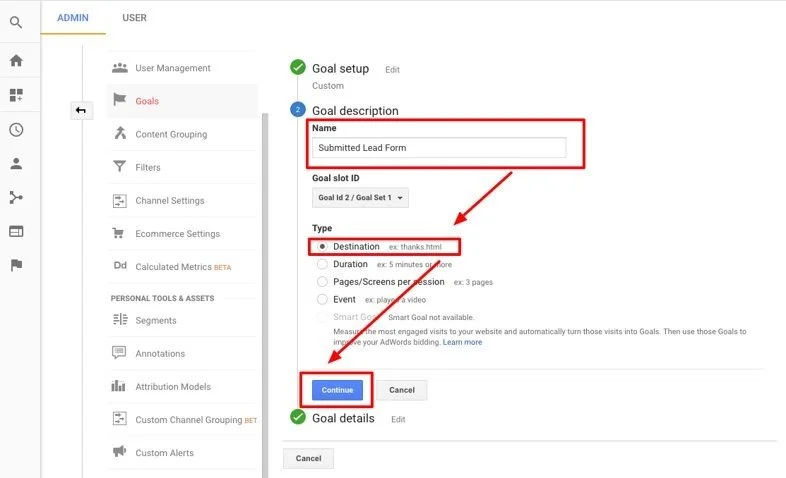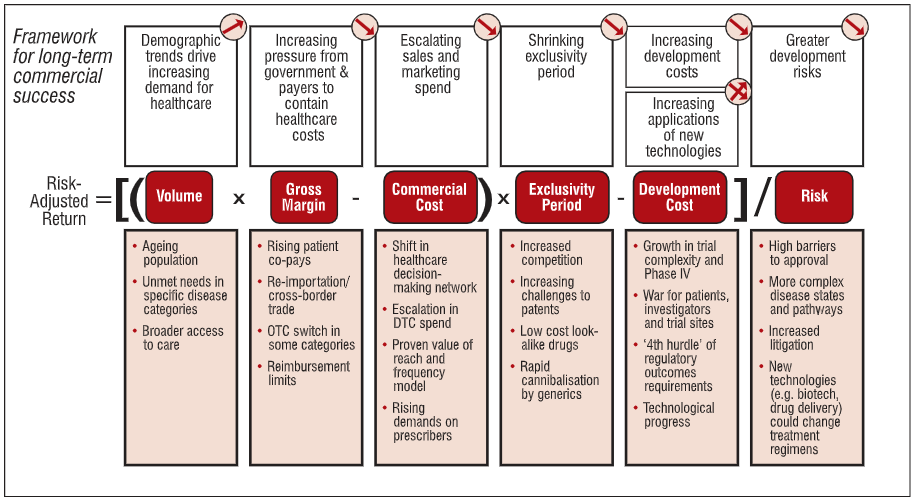Demonstrating ROI from B2B Pharmaceutical Marketing
How to demonstrate ROI from B2B pharmaceutical marketing, with tips for setting up better marketing reporting.
We currently live in a society striving for zero wastage. Striving for efficiency and effectiveness; economy living. This is also the same in business, specifically in marketing. Shareholders have put commercial departments, and therefore marketers, under pressure to deliver tangible marketing results on minimal budgets.
Every marketing dollar is therefore accounted for - marketing campaigns that yield results are maximised with those underperforming scrapped. If X was invested into campaign Y, what was the ROI (return on investment)? These are the kinds of answers B2B pharmaceutical marketers need to demonstrate in 2021, where budgets have been stripped more so than ever.
Subscribe to receive marketing insights via email
The issue, of course, is that demonstrating ROI can be difficult. Different types of campaigns with different types of objectives make assigning a value to a marketing activity (or even dollar) ambiguous. Having said this, marketers can still set an approximate value for marketing ROI, especially within a digital context, to provide insights into the effectiveness of marketing efforts. This post will offer some insight into how to demonstrate ROI for your B2B pharmaceutical marketing activities.
There are groups of metrics that B2B marketers can use to begin to measure their marketing activities to be able to understand ROI. One of the best examples of such groups (within three levels) can be seen below, provided by the Content Marketing Institute, in the form of a KPI pyramid,
Here, the marketing objective is lead generation and their pyramid includes three separate sections: Primary indicators, secondary indicators and user indicators, which are all related to that overall objective. Marketers will run day-to-day activities where the primary method of determining ROI is on a campaign level. Such “front-end metrics” such as conversions and visitors/views indicate if the marketing is generating an ROI on an awareness/top-of-the-funnel perspective.
The second tier of the KPI pyramid - more associated with reporting to those above the marketing positions that allocate marketing budget and form strategy - measures “middle metrics” such as cost per conversion and subscribers/leads. At the top of the pyramid are the “back-end metrics” which relate to the actual sales leads generated (or SQLs) and the costs associated with generating such SQLs. So, the pipeline and revenue details show how the marketing efforts are contributing at an organisation-wide level and the revenue associated relative to the total marketing/commercial spend.
Together, these metrics help improve the marketing process (and demonstrate ROI). If a LinkedIn strategy is the main focus of your marketing efforts and budget, but you’re not getting visitors, subscribers or leads from it, and therefore no SQLs or customers further up the pyramid, you need to alter your strategy and experiment with other channels.
Here are some tips and approaches a B2B pharmaceutical marketer would use to calculate ROI.
1. Basic ROI calculation
The basic ROI calculation compares the profit generated relative to the investment made from the marketing campaigns, and looks something like this:
ROI = (Net Profit/Total Cost) x 100
As a B2B pharmaceutical marketer, you will likely be measuring ROI in some form at present - the key is to measure what’s important to you based on your specific marketing campaigns and subsequent objectives. Such ROI calculation means very little if you’re measuring metrics that your marketing campaign do not directly influence, or if you are using wrong or inaccurate data.
ROI is notoriously (and increasingly) difficult to measure in B2B pharmaceuticals and marketers will need to work with sales departments to understand order values (or at least, average order values) or average lead value. Relying on offline sales data and tracking customer journeys requires a number of tools and a smooth data flow within the organisation. You will likely experience similar difficulties when collaborating with other departments as such. But an idea of the return for the total marketing spend for the year is certainly a requirement for effective marketing planning.
2. Expand digital resources to keep pace with customer expectations and competitor innovations
20 years ago, accurately measuring ROI would be almost impossible. But now it’s made possible due to the vast number of marketing analytics, automation and reporting tools available as digital becomes more integrated and mature. Despite the challenges that come with using new digital marketing tools, B2B pharmaceutical marketing can be assisted by them to help understand ROI.
It’s key to define what success looks like - what the marketing objectives are - then use the appropriate technologies to effectively track the metrics/KPIs (from the KPI pyramid) associated with those objectives. Overcoming the technology gap requires ongoing investment in digital marketing courses, training and certifications to effectively kick-start this digital strategy. Doing so will naturally keep you up to speed with those around you, which includes the customers themselves as well as your competitors, and will allow you to become savvier with your reporting.
3. Google Analytics goals
Almost every B2B pharmaceutical marketer will have responsibilities related to the organisation’s website. But one of the most difficult things to do is run a website effectively; demonstrating ROI from the ongoing investment of paying for your content systems, the individual components of a marketing stack, hosting, as well as the ongoing management/content creation required.
We would always recommend our digital-focused clients use the more advanced features of Google Analytics to demonstrate ROI. Google Analytics Goals can help attribute ROI on your website if the goal is to capture leads or make sales, for example. Determine what you want the user to do in Google Analytics by setting up some quick goals:
Click Admin and in the View column, click Goals
Create "New Goal"
Determine the goal – in our case the goal type in "Destination"
Set the goal – use the URL of the destination.
Assigning a monetary value to a goal provides a method for comparing conversions and measure changes/improvements to the website. Often, Google Analytics’ reporting features are used to identify the number of visitors to the website or the sources of those visitors, but Google Analytics can do much more, such as help to calculate your website ROI. Again, it will likely come down to your understanding of the app, specifically its features so that you can begin using it to track metrics further up the KPI pyramid.
What are the actions on the website we want our users to take? What is the desired user journey? What constitutes a return? Goals can be set to measure this and over time, when you have multiple goals, you can create a dashboard that summarises them all.
4. Understanding Cost per lead/acquisition
Lead generation has become one of the most obvious types of campaigns/objectives for B2B pharmaceutical marketers of late. Simply because it’s easy to understand the results you might experience from such a campaign. Simply put, it’s the number of leads generated/conversion rate. As per the KPI pyramid, B2B pharmaceutical marketers striving for ROI can also identify the costs associated with such lead generation campaigns and attribute them on a per lead basis. The formula is necessary and a simple one:
Cost Per Lead = Total Marketing Spend/Total New Leads
This formula is also used when determining the cost per acquisition - when a customer or client is generated from the marketing campaigns (from the total marketing spend). The cost per acquisition tells you how much it costs on average to acquire a new customer.
If the cost per lead is higher than its potential value, you need to evaluate your marketing efforts. If the cost per acquisition is higher than the customer’s potential lifetime value, then you also have a problem. Determining such ROI indicators begin with marketers, and therefore, reporting mechanisms and metrics needs to be identified and tracked so that B2B pharmaceutical marketing can be attributed to the organisation’s overall performance.
5. Closed-loop marketing
Closed-loop marketing is a form of marketing that relies on data and insights. Simply put, “closing the loop” means that sales teams report to marketing about what happened to the leads they receive, which helps marketers understand their best and worst lead sources. In our sectors, where sales are often made offline, closing the loop is essential to understand and demonstrate ROI. This is the only way that B2B pharmaceutical marketers can see the full picture.
How to close the loop: (1) Review your omnichannel marketing approach and various marketing touchpoints and channels, (2) Determine if your marketing automation system is adequate for both marketing and sales departments, (3) Review the processes of the sales teams concerning your campaigns, (4) Understand the processes that are needed - such as monthly sales and marketing meetings - to engage data to build insights and define opportunities, and finally (5) Realise if your data management system is adequate to effectively deal with each of the preceding elements.
Working within each of the five stages will strengthen your ability to deal with pharmaceutical-based audiences and realise the benefits of a closed-loop marketing approach. As you may have guessed… the main benefit is to demonstrate ROI.
6. Focus on long term success rather than short-term ROI
A return on investment can only be generated over a considerable period of time. Similarly, the effective measurement of any campaign can only be achieved over time when adequate data has been collected for the dataset to become accurate and valid. Focussing long-term will achieve this.
Of course, it’s imperative that data is managed on an ongoing basis to inform short-term decision making on a campaign level. Some of the metrics associated are found towards the base of the KPI pyramid. Testing messaging impact, segment-specific engagement, optimising CTAs etc. But year-over-year, relationships between B2B pharmaceutical marketing strategies and ROI can be identified that can provide the appropriate performance insights, as well as drive future marketing strategies. This is precisely why long term measurement is key.
Tough investment decisions are required in this respect, as a paper published some time ago (Capgemini, 2006) stresses that tough investment decisions will come from managements that do not show an immediate and short-term gain in ROI and assert that “given the changing healthcare environment, a broader perspective on ROI helps to cope with rising uncertainty.” So a fine balance needs to be struck, with long-term ROI becoming the driver, with short-term reporting keeping the wheels moving on the marketing machine.
Capgemini (2006) via Eye for Pharma.
7. Develop a culture of experimentation
We often talk about experimentation with our marketing campaigns in the B2B pharmaceutical sectors, and there is a legitimate reason for doing so directly related to ROI: Identify the types of campaigns that produce the higher amount of return to then replicate and reproduce (eradicating waste in the process). Testing and experimenting, monitoring and analysing groups of data in relation to different benchmarks, can produce the best in your campaigns.
The best thing you can do within your marketing department is developing a culture of experimentation. Nikola Andric of Deloitte, on PM360 discusses the impact of representatives’ visits on HCPs’ total prescriptions filled for the advertised brand, with the widely used method for this measurement being the randomised experiment, which would “isolate” the effect (on prescriptions filled) of the campaign. So, any observed difference in metrics between the campaign and control groups can therefore be directly attributed to the reps’ visits. This short post is worthy of a read to gauge this experimentation mindset.
Interestingly, the article goes on to explain that such experiments are not always practical or even feasible, and can be difficult to implement (especially as omnichannel marketing initiatives increase the number of promotional tactics that need to be measured), prohibitively expensive, unethical, and/or take significant time to yield results. This said, improving a particular situation requires making changes in the variables within, and therefore, basic tweaks and optimisations, as well as varying channels and approaches during intervals, will arm B2B marketers with the appropriate insights to increase marketing return and subsequently demonstrate ROI.
8. Use historical data (if possible)
Organisations generally look at historical data for marketing performance and financial projections. Historical data takes into consideration, in detail, the activities you have previously undertaken to achieve a certain set of results. This data is accurate and looks at what happened within the current period within your marketing, again, relative to your customers and competitors making it highly useful.
Whilst historical data - what has actually happened in previous campaigns within the same marketplace - provides some of the most accurate datasets for any comparison, it is only one approach to measuring ROI. And often, even though this data sits within your internal organisation, it is often difficult to attain, sometimes even costly. If you can access it to base your marketing spend, great. If not, ensure that you are documenting everything from now on so that this historical data can be used to make ROI decisions in the future.
9. Marginal ROI
At the beginning of this post, we demonstrated the calculation for overall ROI is being the total revenue achieved divided by the total spend. An alternative approach to addressing the million-dollar question related to marketing return is the more advanced metric of marginal ROI.
Marginal ROI models focus on the predicted increase in revenue from an increase in spending. So, essentially, what your next unit of the budget will deliver. Therefore, delivering insights to guide spending and return across digital programmes.
Econsultancy provides a good example: If spending increases from £80,000 to £100,000, and forecasting tools predict that revenue would increase from £200,000 to £230,000, the marginal ROI of that £20,000 is 1.5 (£30,000 divided by £20,000). Looking at the chart below, “forecasting results based on spend for two different publishers, Publisher B delivers a higher overall ROI. However, given where you are on the curve, investing your next pound of marketing spend with Publisher A would give you greater incremental return for that particular pound, at least until spending on Publisher A moves further up the x-axis. Essentially the curve for Publisher A is steeper as spending is on the earlier part of the curve.”
By breaking the strategy down into separate components and channels, B2B pharmaceutical marketers can predict what spending more on particular components would actually deliver. More importantly, there will be a point where spending more, on even the most successful search engine or social media channel, will see a drop in marginal ROI compared to rivals, simply because the return curve flattens out. From here, it is a matter of which curve has the higher marginal ROI at that point.
Marginal ROI offers a predictor of how modifying execution may change ROI in upcoming marketing and media plans.
10. Sometimes, it isn’t all about ROI…
Before we conclude, perhaps it’s appropriate to state that, sometimes, it’s not all about ROI - it may be more about looking beyond the numbers if the B2B pharmaceutical marketer feels so. Soft KPIs can sometimes provide adequate metrics on performance by themselves - it’s up to marketers to decide for themselves what success looks like because success looks different to every organisation and marketer. Whether the objective of a campaign or marketing strategy is to increase brand awareness, disease awareness, or simple engagement, there are ways to track whether the campaign accomplishes this. Measuring for the sake of measuring something won’t yield better results.
Campaigns on social media allow consumers to assess the product or brand, from a sentiment perspective for marketers, as well as find product influencers or opponents which can’t really be measured from an ROI perspective, but we know that social media does influence the purchasing decision. Whilst demonstrating marketing ROI isn’t compulsory in this respect, it is recommended.
11. Demonstrating ROI from B2B pharmaceutical marketing
Merck uses a comprehensive KPI pyramid framework of indicators to manage performance: is EBITDA pre1 (Earnings before interest, income tax, depreciation and amortization as well as adjustments). This example isn’t limited to their marketing department but it does provide a good example of detail.
The Value Creation and Financial KPI Pyramid, which summarises the important financial performance measures of the Merck Group, reflects the comprehensive framework of financial KPIs to steer the businesses and prioritise the allocation of resources. It consists of three managerial dimensions, namely Merck Group, Business and Projects, each of which requires the use of different indicators. Looks similar to the KPI pyramid for earlier, doesn’t it? We would suggest that all B2B pharmaceutical marketers develop their own pyramid and use it as a basis for measurement, reporting and ROI.
Some of the questions you could be asking yourself are: How much did each impression, click and conversion cost? How many conversions became quality leads that led to the pipeline? How much revenue did this campaign generate? Where can this campaign improve to help these ROI metrics grow?
Hard metrics are important for proving and improving ROI (and demonstrating the value of your activities and spend). It’s also important to track the softer (primary) metrics in addition to ROI in order to have a comprehensive view of how your campaigns are performing. Always identify the KPIs that are important to you - the ones that are likely to tell you if you are on track to reach your marketing objectives. As your organisation pushes marketing boundaries into new strategies - using new and innovative digital technologies - measure ROI beyond just revenue impact so your whole team can continue to drive engagement and improve sales.
For more on data and analytics in the pharmaceutical sectors, and how we can help you, visit our section on web.







